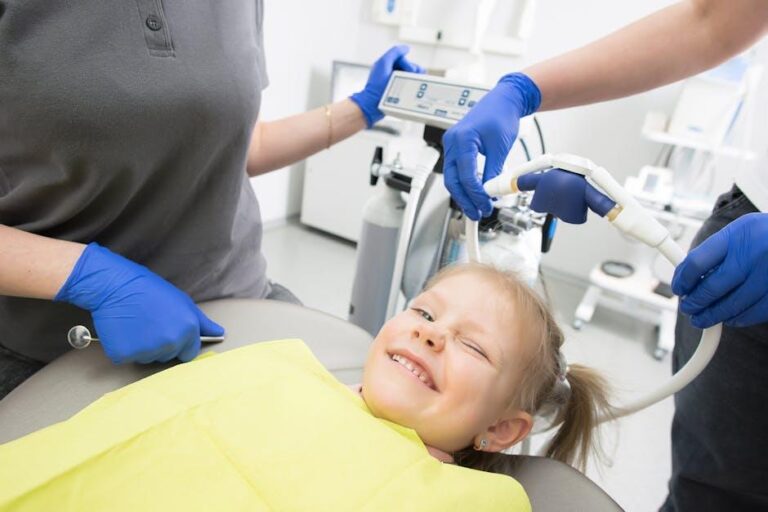1 in 3 Kids Has Dental Problems, Poll Finds – U.S. News & World Report
A recent poll reported by U.S. News & World Report has uncovered a troubling trend: one in three children in the United States suffers from dental problems. This statistic sheds light on a critical public health issue affecting millions of young smiles across the country. Parents, caregivers, and healthcare providers alike must be aware of the causes, effects, and prevention strategies to safeguard children’s oral health.
Understanding the Scope: How Widespread Are Childhood Dental Problems?
The poll surveyed thousands of households to determine the prevalence of dental issues among kids aged 2 to 12. The findings revealed that:
- Approximately 33% of children have some form of dental problem, including tooth decay, cavities, or gum issues.
- Dental cavities remain the most common chronic childhood disease.
- Access to pediatric dental care varies significantly based on socioeconomic status and geographic location.
These findings indicate that childhood dental problems are not isolated incidents but rather a widespread concern requiring immediate attention.
Common Dental Issues Affecting Kids in the U.S.
Here are some of the most common dental problems identified in children:
| Dental Problem | Description | Approximate Prevalence |
|---|---|---|
| Tooth Decay (Cavities) | Destruction of tooth enamel caused by bacteria producing acid. | 20–25% of kids |
| Gingivitis | Mild inflammation of the gums caused by plaque buildup. | 10–15% of kids |
| Enamel Hypoplasia | Incomplete or defective formation of tooth enamel. | 5–8% of kids |
| Orthodontic Problems | Misalignment of teeth or jaws causing functional or aesthetic issues. | 12–18% of kids |
Why Are Dental Problems So Common Among Children?
Several factors contribute to the high prevalence of dental problems in children, including:
- Poor Oral Hygiene: Many children lack the skills or motivation to maintain proper brushing and flossing habits.
- Dietary Choices: High consumption of sugary snacks, sodas, and processed foods fuels tooth decay.
- Lack of Access to Care: Economic barriers or lack of insurance can prevent routine dental visits.
- Education Gaps: Parents and children may not be fully aware of the importance of oral hygiene and early prevention.
- Fluoride Deficiency: Insufficient fluoride exposure can weaken enamel.
Practical Tips to Prevent Dental Problems in Kids
Preventing dental issues early on can pave the way for a lifetime of healthy smiles. Here are some actionable tips for parents and caregivers:
- Establish a Daily Oral Care Routine: Encourage brushing twice a day with fluoride toothpaste and flossing regularly once teeth touch.
- Limit Sugary Foods and Drinks: Reduce candy, soda, and sugary snacks; opt for water and fresh fruits instead.
- Schedule Regular Dental Checkups: Begin dental visits by the child’s first birthday and continue routine cleanings every six months.
- Use Fluoride Mouthwash: Consult with your dentist about fluoride supplements or rinses suitable for your child’s age.
- Lead by Example: Children emulate parents — maintaining good hygiene yourself encourages them to do the same.
- Educate About Oral Health: Teach children why taking care of their teeth matters, using fun stories or videos.
Case Study: Impact of Early Intervention
Consider the story of the Johnson family from Ohio. Their 6-year-old daughter, Emily, was diagnosed with multiple cavities during a routine visit. The family immediately implemented a stricter oral hygiene regimen and made changes to Emily’s diet. After several months and professional dental treatments, Emily’s oral health improved significantly, illustrating:
- The critical role of early dental screenings.
- How parental involvement shapes children’s dental habits.
- The effectiveness of professional care combined with home practices.
Emily’s story underscores the importance of vigilance, education, and prompt dental care in battling childhood dental problems.
Why Addressing Childhood Dental Health Should Be a National Priority
Dental problems in children extend beyond discomfort or aesthetics—they can lead to:
- Difficulty eating and speaking properly.
- Lower self-esteem and social challenges due to appearance.
- Higher rates of absenteeism in school due to dental pain.
- Potential for severe infections that affect overall health.
Investing in pediatric dental health through education, access, and preventive care improves kids’ quality of life and reduces long-term healthcare costs.
Conclusion: Taking Action to Secure Healthy Smiles
With 1 in 3 kids in America facing dental problems, it is imperative for parents, healthcare professionals, and communities to unite in promoting better oral health for children. Through early education, consistent dental care, and healthy lifestyle choices, we can significantly reduce these alarming statistics. Remember, healthy teeth lead to happy kids — and that’s a smile worth protecting.


